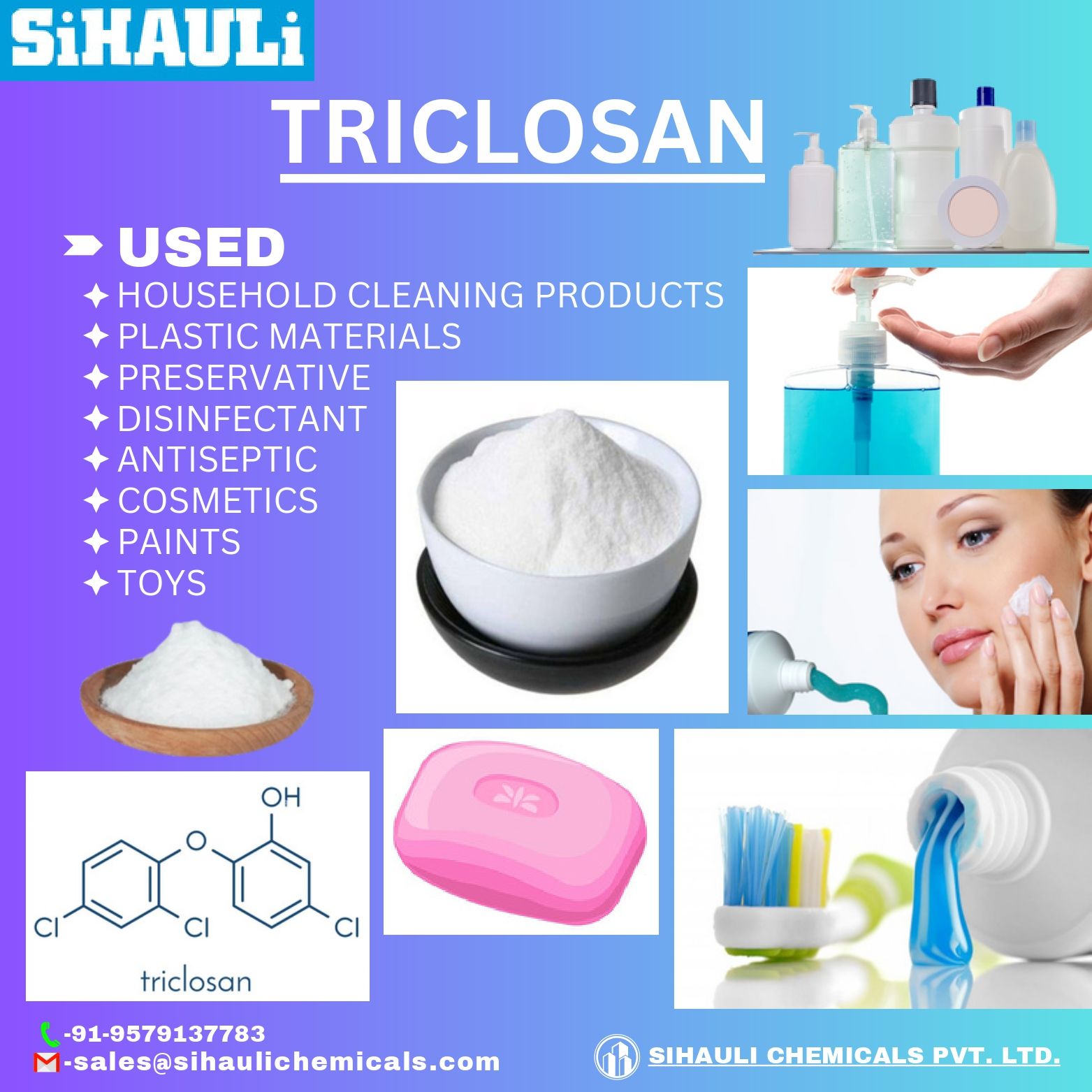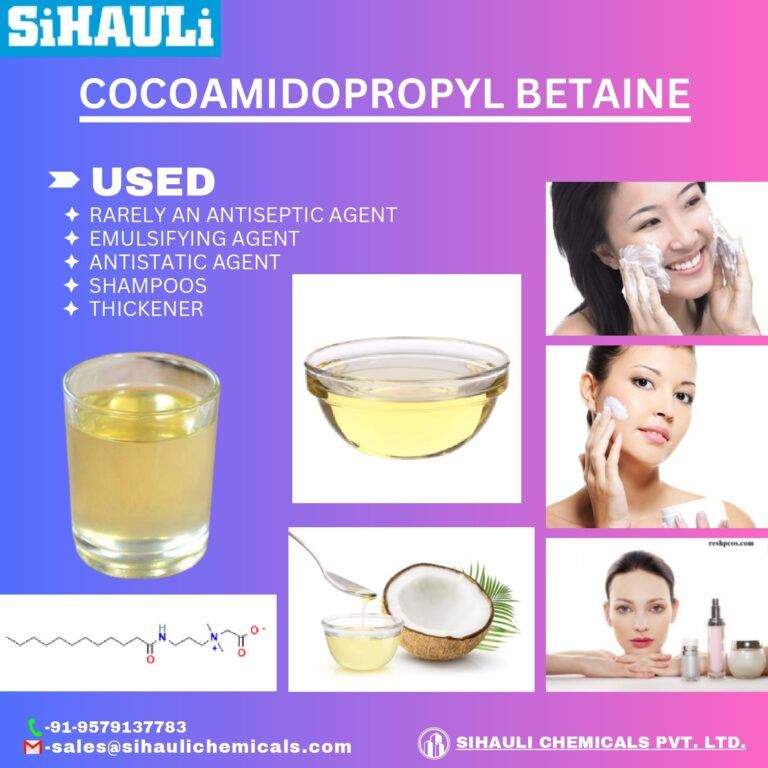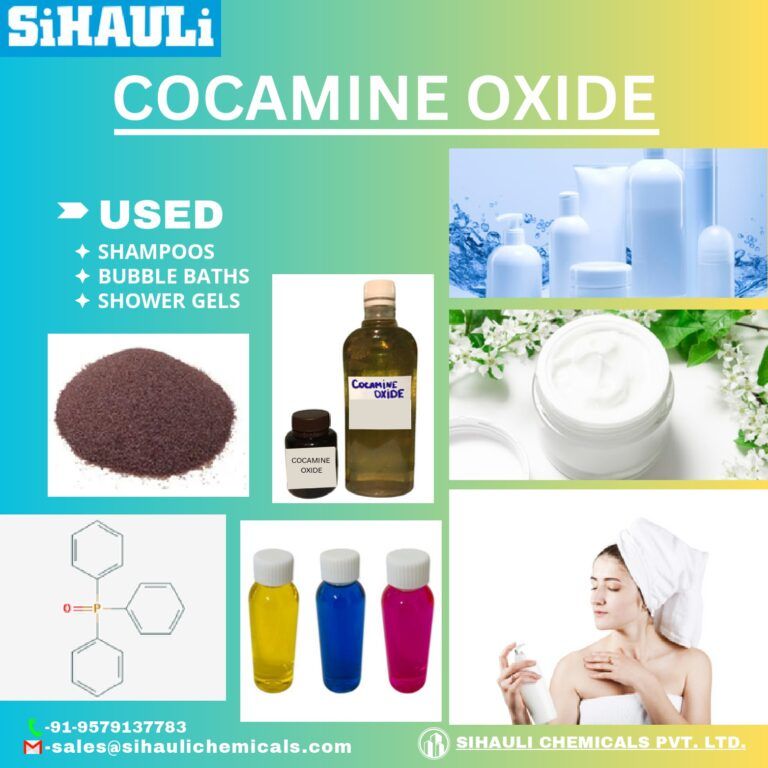Triclosan is effective against many different bacteria as well as some fungi and protozoa it is widely used as an antiseptic, preservative and disinfectant in healthcare and in many consumer products including cosmetics, household cleaning products, plastic materials, toys and paints.
Triclosan is an antibacterial and antifungal agent found in some consumer products, that include toothpaste, detergents, soaps, toys, as well as surgical cleaning treatments. The antimicrobial active ingredient is added to a wide verity of products where its main focus is to slow or stop the growth of fungi, bacteria and mildew. In institutional, commercial and industrial equipment uses, Triclosan is incorporated in fire hoses, conveyor belts, dye bath vats, or ice-making equipment as an antimicrobial. In healthcare and medical department, Triclosan is used as an ingredient in surgical scrubs and hand washes. At a high concentration, Triclosan acts as a biocide with multiple cytoplasmic and membrane targets. When used at a lower concentration in commercial products, Triclosan appears bacteriostatic which means it targets bacteria primarily by inhibiting fatty acid synthesis.
The use of Triclosan at a high dose may lead to some side effects such as: abnormal endocrine system/thyroid hormone signalling, weakening of the immune system. Reports indicate that children exposed to antibacterial products at a very early age have an increased chance of developing allergies, asthma and eczema.
Information given here is based on the salt content of the medicine. Uses and effects of the medicine may vary from person to person. It is advisable to consult a Internal Medicine Specialist before using this medicine.
What is triclosan?
Triclosan is a chemical ingredient added to many different products. The chemical has antibacterial properties that prevent or stop bacterial growth and contamination. In the past, triclosan’s germ-killing capabilities made it a common additive in many over-the-counter (OTC) antibacterial soaps and body washes.
In 2016, the U.S. Food and Drug Administration (FDA) banned the sale of consumer antiseptic wash products containing triclosan. This included about 40% of all soaps sold. You were supposed to use these antimicrobial products with water and rinse them off after use. The FDA stated that these products may not be safe, and they work no better than regular soap and water.
In addition, research indicates that antibacterial soaps may be creating drug-resistant bacteria. They could also be causing long-term health issues.
What products contain triclosan?
A wide range of consumer products contain triclosan. More than 80% of triclosan usage is in personal care products, cosmetics and household cleaning products. These products contain between 0.1% and 0.3% triclosan. These include items regulated by the FDA, such as:
Fluoride toothpaste.
Mouthwashes.
Facial cleansers.
Aftershave.
Deodorants and body sprays.
Lotions and creams.
Cosmetics.
Detergents and dishwashing liquids.
Triclosan is part of other materials, including pesticides and textiles. It keeps these materials resistant to bacterial growth. Clothing, shoes, carpeting, furniture, toys and kitchenware all contain the ingredient. The FDA doesn’t regulate these products.
Triclosan’s first use was as a pesticide in the 1960s. It’s now an ingredient in commercial and industrial equipment such as conveyor belts and HVAC coils. In residential and public access areas, it’s used in flooring, shower curtains and mattresses.
What’s wrong with triclosan?
In 2013, the FDA asked the makers of antibacterial soaps and body washes to provide data proving the products were safe for long-term daily use. They also wanted proof that these products were better at preventing infections than products that didn’t contain triclosan.
Researchers examined data from many different studies. They found that people who washed with plain soap had the same chances of getting sick as people who used antibacterial soap containing triclosan.
The FDA declared the makers of these products didn’t come up with the necessary data to prove the safety and effectiveness of triclosan. They stated that washing with antibacterial hand soap hadn’t proven to be any more effective than washing your hands with ordinary soap and water.
In December 2016, the FDA issued a final rule regarding certain OTC consumer products containing triclosan. They decided companies could no longer sell antibacterial soaps and other products in the United States.
The FDA’s rule doesn’t affect hand sanitizers or antibacterial wipes. It also doesn’t include antibacterial products used in health care settings. If soap and water aren’t available, the Centers for Disease Control and Prevention (CDC) recommends the use of an alcohol-based hand sanitizer instead. The sanitizer should contain at least 60% ethyl alcohol or 70% isopropyl alcohol.
What are the benefits of triclosan?
There’s evidence that triclosan may provide a benefit in some consumer products. For example, the FDA studied data on the ingredient in a certain toothpaste. The data showed that triclosan in that toothpaste was effective in preventing gingivitis.
But for most other products, the FDA hasn’t received evidence that the ingredient provides any kind of benefit to human health.
What are the side effects of triclosan?
When you use products containing triclosan, your body can absorb small amounts of it. Your skin or mouth can absorb the ingredient within one to four hours.
In a study, the CDC measured triclosan in the pee (urine) of 2,517 participants ages 6 and older. Scientists can estimate the amount of the chemical in people’s bodies by measuring the amount in their urine. They found triclosan in the urine of almost 75% of the people tested. That means so many personal care products contain the ingredient that nearly three-fourths of the U.S. population is likely to have been exposed to it.
Finding measurable amounts of the chemical in urine doesn’t make triclosan bad. But researchers don’t know the exact effects of it on the human body. Some data suggest that antibacterial ingredients such as triclosan may do more harm than good over the long term. Several studies have shown that long-term exposure to the chemical could pose health risks. This could range from allergies to bacterial resistance.
One study described the role that triclosan may have in developing allergies and sensitivities to certain foods. Certain products containing the ingredient cause skin irritation.
Triclosan is an endocrine-disrupting chemical. That means it can harm your endocrine system, leading to issues with proper hormone function. Some animal studies have shown that exposure to high amounts of the ingredient may cause a decrease in certain thyroid hormones. Exposure to the ingredient is of particular concern to women and people assigned female at birth. That’s because it can cross the placenta and enter breast milk (chest milk).
Studies regarding the role of triclosan in cancer go both ways. Some studies suggest that long-term exposure to the chemical increases your risk of certain cancers. But other studies have shown it has the potential to be used as a treatment for cancer, particularly prostate cancer.



